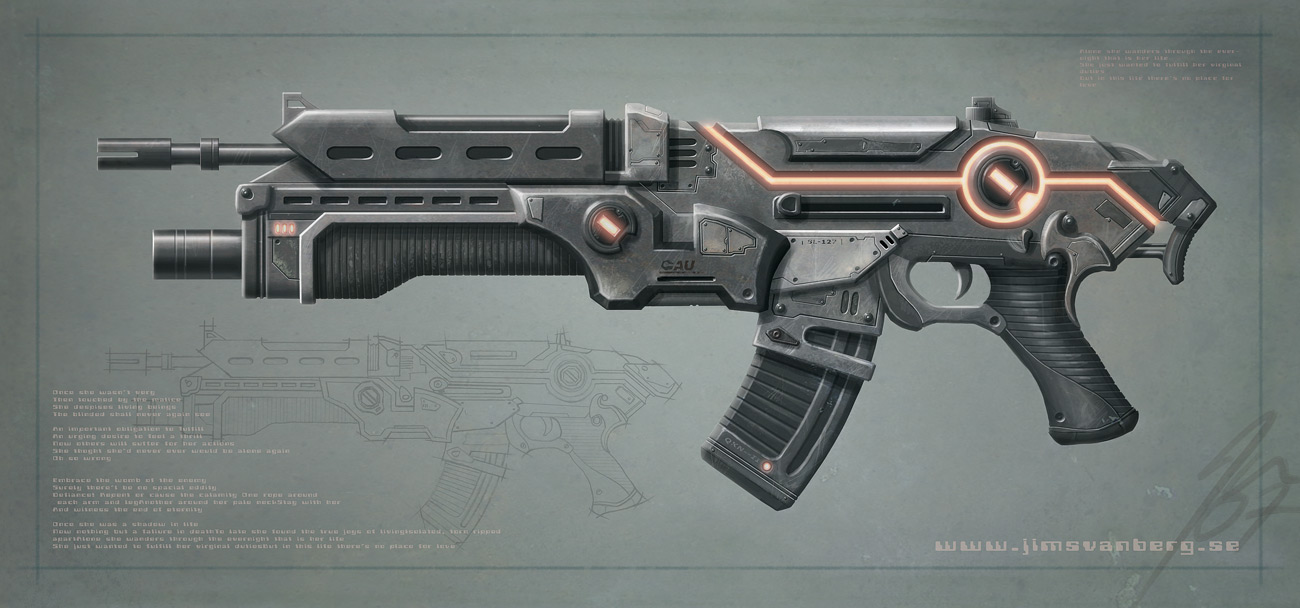G
Gateman
Guest
Original poster
Name: SPR-901 "Beam Saber"
Function: Close quarters sabotage. The SPR-901 (SPR designation derived from the working title "Solid Plasma Rod") is a standard sword with a modern twist. The "blade" is made of a telescoping rod composed of a classified alloy of 316 stainless steel, titanium, and 750 nickel, with small holes drilled in at regular intervals along the rod. The holes act as vents for a superheated plasma to coat the rod. The rod's alloy mixture has a somewhat unique charge that keeps the plasma attracted to the metal, rather than dispersing into the air, and its high melting point prevents degradation to an extent. The design and characteristics of the SPR-901 make it very well suited for the sabotage and disabling of automata and mech troopers, with the plasma reaching temperatures high enough to cut through most metals with ease. Additionally, the electric charge runs the risk of severely damaging any electrical systems that it comes in contact with.
Weakness: The alloy mix, while sturdy and advantageous, is not without flaws. The heat of the plasma degrades the metal over time, and the changing temperatures can warp the metal to the point that the telescoping rod can jam during operation; while this seems like a minor problem, the lack of vents for the plasma can cause the handheld unit to explode. In addition, the supercapacitor power source for such a tool is rather large and cumbersome, somewhat akin to the fuel packs of WWII era flamethrowers, and is attached to the handheld unit via reinforced cable. Should either become damaged, the unit is worthless. Finally, the extreme heat of the plasma requires any operators to use shielded body armor to protect themselves from severe and even fatal burns.
This model is currently being field tested to great success, but needs to continue being researched to remove weaknesses and address practicality. Currently, the maximum operating time for the SPR-901 before mechanical failure occurs is 120 minutes.
Function: Close quarters sabotage. The SPR-901 (SPR designation derived from the working title "Solid Plasma Rod") is a standard sword with a modern twist. The "blade" is made of a telescoping rod composed of a classified alloy of 316 stainless steel, titanium, and 750 nickel, with small holes drilled in at regular intervals along the rod. The holes act as vents for a superheated plasma to coat the rod. The rod's alloy mixture has a somewhat unique charge that keeps the plasma attracted to the metal, rather than dispersing into the air, and its high melting point prevents degradation to an extent. The design and characteristics of the SPR-901 make it very well suited for the sabotage and disabling of automata and mech troopers, with the plasma reaching temperatures high enough to cut through most metals with ease. Additionally, the electric charge runs the risk of severely damaging any electrical systems that it comes in contact with.
Weakness: The alloy mix, while sturdy and advantageous, is not without flaws. The heat of the plasma degrades the metal over time, and the changing temperatures can warp the metal to the point that the telescoping rod can jam during operation; while this seems like a minor problem, the lack of vents for the plasma can cause the handheld unit to explode. In addition, the supercapacitor power source for such a tool is rather large and cumbersome, somewhat akin to the fuel packs of WWII era flamethrowers, and is attached to the handheld unit via reinforced cable. Should either become damaged, the unit is worthless. Finally, the extreme heat of the plasma requires any operators to use shielded body armor to protect themselves from severe and even fatal burns.
This model is currently being field tested to great success, but needs to continue being researched to remove weaknesses and address practicality. Currently, the maximum operating time for the SPR-901 before mechanical failure occurs is 120 minutes.




